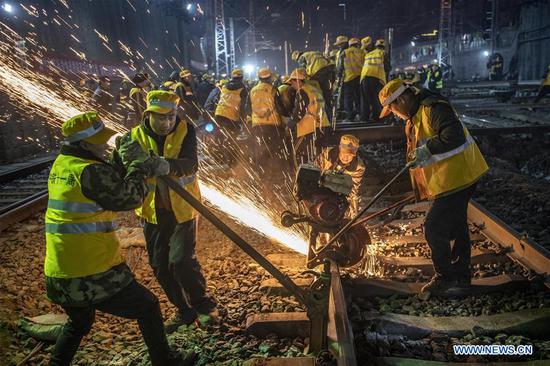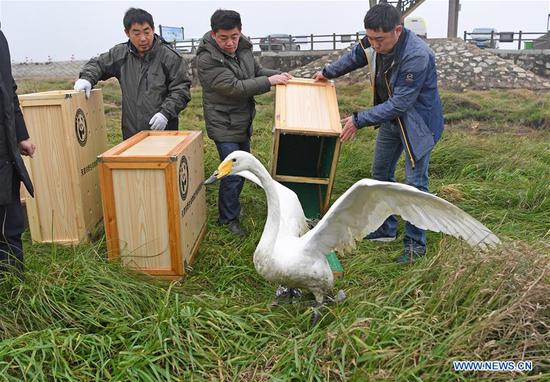CAAC also announced plans for the relocation of airlines.
Carriers including China Southern, China Eastern, Beijing Capital Airlines and China United Airlines will move to the new facility, while others such as Air China, Hainan Airlines and Grand China Air will remain at Beijing Capital International Airport.
Foreign airlines, along with those from Hong Kong, Macao and Taiwan, can choose which airport they operate from, with the option of having a presence at both.
Chinese carriers, except China Postal Airlines, will have to use just one airport.
The phased transition will start from next winter and be completed over 12 months, CAAC said.
Li, at Roland Berger, said, "In the initial period of operation, the revenue of airlines that move to the new airport may be affected. Take China Eastern, for example-its most profitable flights are those operating between Beijing and Shanghai, and the carrier may lose some business travelers after the move.
"However, with the improvement in services and better infrastructure at the new airport, such losses will gradually be recovered. The new airport can also attract more passengers by introducing better shopping experiences and smart devices."
Huang Pu, general manager of China Eastern's planning and coordination division in Beijing, sees the move to the new airport as a great opportunity for the company to make the capital its most important market outside of its Shanghai headquarters.
"We have detailed plans to expand our network and invest in the support project at the new airport," he said.
As a foreign airline with the right to choose its operating location in Beijing, Air France KLM plans to move to the new airport.
Toon Balm, general manager of Air France KLM China, said many people fly from Europe to Beijing, but they do not stop in the city, and continue their journeys on flights operated by the carrier's Chinese partners.
"China Eastern, China Southern and many other airlines in the Sky-Team Airline Alliance will move to the new airport, so we will follow," he said.
Balm said Air France KLM hopes the new airport will bring additional traffic, and from a commercial perspective that business can grow. He added that the carrier needs to be very flexible with its aircraft, network, slots and customers.
He said moving to the new airport is a challenge, but from a business perspective it is very interesting.
American Airlines, the largest carrier by fleet size, said it is considering opportunities for increased connectivity with China Southern, including moving with the carrier to the new airport. However, a final decision has not been made.
In 2017, American Airlines made a $200 million equity investment in China Southern, creating a foundation for their long-term partnership. Code sharing and interline agreements between the two carriers give customers of both access to many more destinations in China, as well as North and South America, the US airline said.
Anthony Flynn, communications manager for Asia-Pacific at American Airlines, said: "In November, American Airlines and China Southern took steps to further strengthen our partnership with a significant expansion of code-sharing cooperation and the launch of reciprocal frequent flyer benefits and lounge access. These benefits are due to come online this year.
"China and the United States are the two biggest air travel markets in the world, with growth forecast in the business and leisure sectors. With the opening of Beijing Daxing International Airport in 2019 and the ability to cooperate fully with China Southern, American Airlines is excited about its future in the Chinese market."
Construction progress
According to the office at the new airport, 80 percent of the interior construction has been completed and all the external work is finished.
The water supply pipeline network and electricity transformer substations are ready, while a natural gas pipeline will soon be in use. Green and energy-saving concepts were adopted for the airport's design and construction.
Passengers will spend a maximum of eight minutes getting from the center of the terminal to the farthest boarding gate, about one-third the time spent at Beijing Capital International Airport, according to the office.
Renewable energy will comprise more than 10 percent of the new airport's energy consumption mix when construction is completed. This will rank it No 1 in terms of the renewable energy adoption level at airports nationwide, according to the Beijing Municipal Commission of Development and Reform.
Photovoltaic solar energy panels have been fitted on roofs of the parking lots and business jets hangar, while geothermal energy will be used in the airport's service facilities.
The solar energy generation system will provide 6.1 million kilowatt-hours annually for the new facility, accounting for 1 percent of total energy consumption. Traditional power plants and natural gas will also supply energy to the site.
A comprehensive network will help travelers reach Beijing districts or nearby cities, and it is forecast that more than 50 percent of them will use public transportation at the new airport.


















































